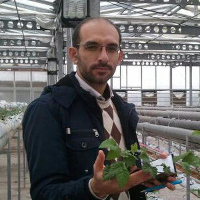Evaluation of Thamson- Navel Orange Young Trees Resistance to Freezing, Using Carnauba Wax and Glycol Potash
Influx of Siberian cold air masses into the northern parts of Iran causes severe decrease in temperature, heavy snowfall and freezing of citrus every few years. Depending on the temperature drop, in some years only fruits and in some years, citrus trees suffer severe damage too. One of the sudden drops in temperature was in January 2007, when the temperature dropped from -7 degrees Celsius to -13 degrees Celsius. Consecutive damage to citrus trees and crops in the north of the country has caused citrus gardeners to despair of its economic viability and to refrain from rehabilitating destroyed orchards. The mechanisms of frost resistance and relative tolerance to cold in citrus include physiological adaptation and metabolic changes. These changes will lead to the production of various cellular osmolytes, the accumulation of soluble substances, changes in lipid metabolism (with an increase in unsaturated fatty acids), an increase in supercooling temperature, and ultimately an increase in plant resistance. The use of passive and active methods can also partially prevent frost damage or reduce the severity of the injury, but spraying with compounds that may provide physical protection of trees against freezing or spraying chemicals that reduce the freezing point of the cellular fluid by altering the concentration of the cell sap could be more promising.
Experimental factors include freezing temperatures at three levels (-5, -8 and -11° C) and spraying with two types of experimental material including carnauba wax in two concentrations of zero and four percent (manufactured by Orange Saft SL, Spain) and glycol potash in two concentrations of zero and 10% (prepared by Pooshesh sabze Company, Iran), carnauba + glycol potash (carnauba wax in 4% concentration and 10% glycol potash concentrate) and control (distilled water solution).
Electrolyte leakage is the uncontrolled leakage of organic ions from the cell membrane due to stress and damage to the membrane. The lowest electrolyte leakage was observed at -5° C and the highest one was at -8° C. As a messenger molecule, proline is effective in regulating mitochondrial activity, cell proliferation, and cell death. Proline also expresses certain genes that are essential for improving plant conditions under stress. Proline concentration increased with decreasing temperature but it decreased again at -8 ° C. Using carnauba wax at -5 ° C has reduced the concentration of total soluble sugars (66.92 micro g / g by weight) but did not significantly differ from the control treatment (83/23) and -11 ° C. Frost tolerance and frost resistance vary in different organs of citrus trees. Young shoots and twigs are very sensitive to cold and frost, so their tissues change color due to the cold. If the intensity of cold and frost increases, it will cause the shoots to dry out. freezing temperature has a significant effect on Shoot dying back, so that the highest dryness of the shoots was observed at -11 ° C (91.66%) and the lowest at -5° C (10.41%). The highest percentage of leaf abscission was observed at -11 and the lowest with significant difference at -5° C. Symptoms of freezing such as leaf abscission and tree Shoot dying back are not seen up to -5 ° C but they are well visible at -8 ° C. Experimental treatments also failed to prevent shoots from drying out at -11° C.
Thomson navel orange young trees do not suffer much damage up to -5° C, but as the temperature decreases, the damage caused by frost increases in the form of leaf abscission and Shoot dying back of branches. Carnauba wax has a positive role in this experiment by preventing leaf abscission at -8 ° C, but glycol potash has a negative role by increasing leaf abscission and Shoot dying back. Increasing leaf potassium levels through potash glycol not only did not increase cold resistance but also increased susceptibility to frost. Potassium must be supplied from other sources. The results of this experiment showed that the use of carnauba wax up to 48 hours before the possible cold, which is announced through meteorology, with a concentration of 4%, can keep it alive up to -8 ° C, which normally destroys the plant, but with passing through this temperature, for example at -11 degrees Celsius, is not able to maintain the plant.
- حق عضویت دریافتی صرف حمایت از نشریات عضو و نگهداری، تکمیل و توسعه مگیران میشود.
- پرداخت حق اشتراک و دانلود مقالات اجازه بازنشر آن در سایر رسانههای چاپی و دیجیتال را به کاربر نمیدهد.



